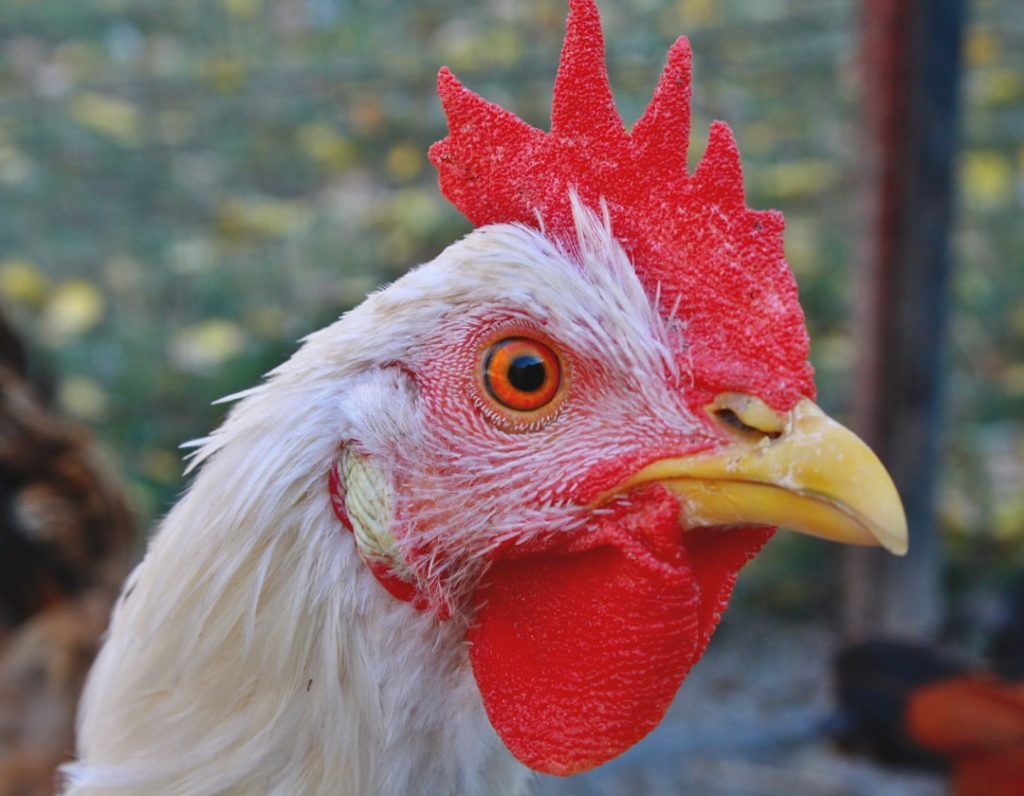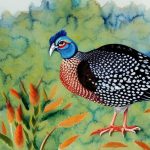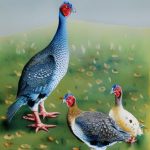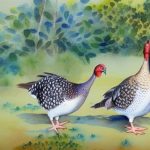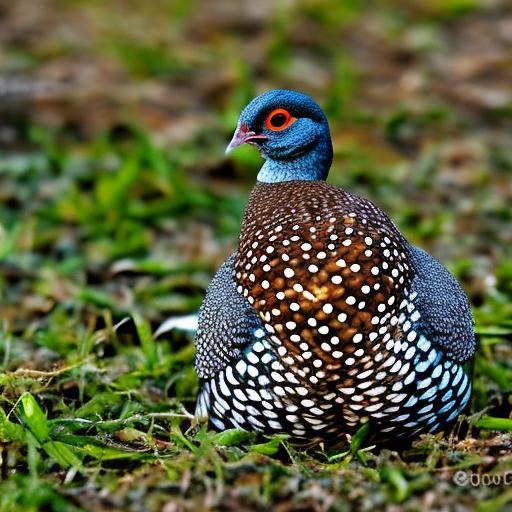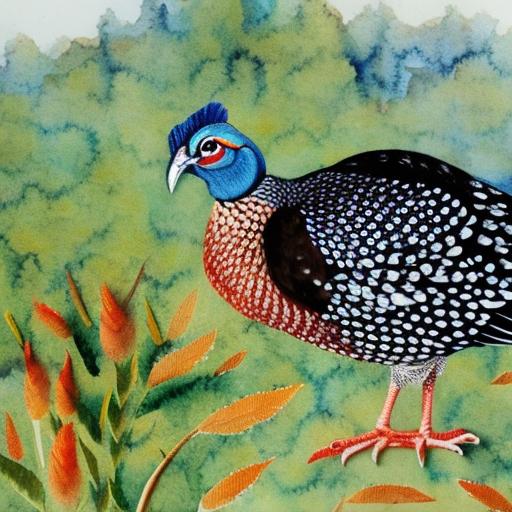The Royal Purple Guinea Fowl is a unique and striking breed of domesticated bird that is known for its beautiful plumage and distinctive call. This breed is highly sought after for its ornamental value, as well as for its delicious and lean meat. The Royal Purple Guinea Fowl is also valued for its ability to control pests and insects, making it a popular choice for organic farmers and gardeners. In addition to its practical uses, this breed is also prized for its regal appearance and elegant demeanor, making it a popular choice for hobbyists and enthusiasts.
Table of Contents
- 1 History and Origins of Royal Purple Guinea Fowl
- 2 Physical Characteristics of Royal Purple Guinea Fowl
- 3 Behavior and Temperament of Royal Purple Guinea Fowl
- 4 Breeding and Care of Royal Purple Guinea Fowl
- 5 Uses and Benefits of Royal Purple Guinea Fowl
- 6 Conservation and Preservation Efforts for Royal Purple Guinea Fowl
- 7 FAQs
- 7.1 What are royal purple breeds of guinea fowl?
- 7.2 What is the origin of royal purple guinea fowl?
- 7.3 What are the characteristics of royal purple guinea fowl?
- 7.4 What is the temperament of royal purple guinea fowl?
- 7.5 How are royal purple guinea fowl cared for?
- 7.6 Are royal purple guinea fowl suitable for beginners?
Key Takeaways
- Royal Purple Guinea Fowl are a unique and prized breed known for their striking appearance and beneficial uses.
- The history and origins of Royal Purple Guinea Fowl can be traced back to ancient Egypt and West Africa, where they were revered for their beauty and utility.
- These guinea fowl are easily recognizable by their vibrant purple feathers, distinctive helmet-like casque, and upright posture.
- Royal Purple Guinea Fowl are known for their active and social nature, making them great foragers and effective pest controllers.
- Proper breeding and care of Royal Purple Guinea Fowl involves providing a balanced diet, adequate shelter, and protection from predators.
History and Origins of Royal Purple Guinea Fowl
The Royal Purple Guinea Fowl has a long and storied history that dates back to ancient times. This breed is believed to have originated in West Africa, where it was first domesticated by the indigenous people of the region. Over time, the Royal Purple Guinea Fowl spread to other parts of the world, including Europe and the Americas, where it became popular for its pest control abilities and culinary value. The breed’s regal appearance and striking plumage also made it a favorite among royalty and nobility, leading to its association with wealth and prestige. Today, the Royal Purple Guinea Fowl is bred and raised in many parts of the world, where it continues to be valued for its beauty, utility, and historical significance.
Physical Characteristics of Royal Purple Guinea Fowl
The Royal Purple Guinea Fowl is known for its distinctive appearance, which sets it apart from other breeds of guinea fowl. This breed is characterized by its deep purple plumage, which shimmers in the sunlight and gives the bird a regal and majestic appearance. The Royal Purple Guinea Fowl also has a unique crest on its head, which adds to its striking and elegant demeanor. In addition to its beautiful plumage, this breed is also known for its slender and graceful build, with long legs and a slender neck that give it a statuesque and dignified presence. The Royal Purple Guinea Fowl is also known for its distinctive call, which is loud and piercing, making it an effective alarm system and deterrent for predators.
The Royal Purple Guinea Fowl is a medium-sized bird, with males typically weighing between 3-4 pounds and females weighing slightly less. This breed has a compact and muscular build, with a rounded body and a short tail. The Royal Purple Guinea Fowl also has a small head with a short beak, as well as bright red wattles and a distinctive crest on top of its head. The plumage of the Royal Purple Guinea Fowl is a deep shade of purple, with iridescent feathers that shimmer in the sunlight. This breed also has bright red eyes and legs, which add to its striking appearance.
Behavior and Temperament of Royal Purple Guinea Fowl
The Royal Purple Guinea Fowl is known for its active and alert nature, as well as its strong instincts for foraging and pest control. This breed is highly social and gregarious, often forming tight-knit flocks with other guinea fowl or poultry. The Royal Purple Guinea Fowl is also known for its curious and inquisitive nature, as well as its strong sense of territory and vigilance. This breed is highly adaptable and resilient, able to thrive in a variety of climates and environments. The Royal Purple Guinea Fowl is also known for its strong flight capabilities, making it an excellent choice for free-range or semi-free-range environments.
The Royal Purple Guinea Fowl is also known for its vocal nature, with a loud and distinctive call that serves as an effective alarm system and deterrent for predators. This breed is highly alert and vigilant, often sounding the alarm at the first sign of danger. The Royal Purple Guinea Fowl is also known for its strong instincts for pest control, eagerly hunting and consuming insects, ticks, and other pests that can be harmful to crops or gardens. This breed is also known for its strong maternal instincts, with hens being attentive and protective mothers to their chicks.
Breeding and Care of Royal Purple Guinea Fowl
Breeding and caring for Royal Purple Guinea Fowl requires careful attention to their unique needs and behaviors. When breeding this regal bird, it’s important to provide them with ample space to roam and forage, as well as a safe and secure coop or shelter to protect them from predators. The Royal Purple Guinea Fowl are social birds that thrive in flocks, so it’s important to provide them with plenty of companionship. When caring for Royal Purple Guinea Fowl, it’s important to provide them with a balanced diet that includes high-quality poultry feed as well as access to fresh water at all times.
When breeding Royal Purple Guinea Fowl, it’s important to provide them with a suitable nesting area where they can lay their eggs in peace. The hens are attentive mothers that will diligently care for their chicks once they hatch. It’s important to provide the chicks with a warm and safe environment where they can grow and develop under the watchful eye of their mother. As the chicks grow, they will need access to a balanced diet that includes high-quality chick starter feed to support their growth and development.
Uses and Benefits of Royal Purple Guinea Fowl
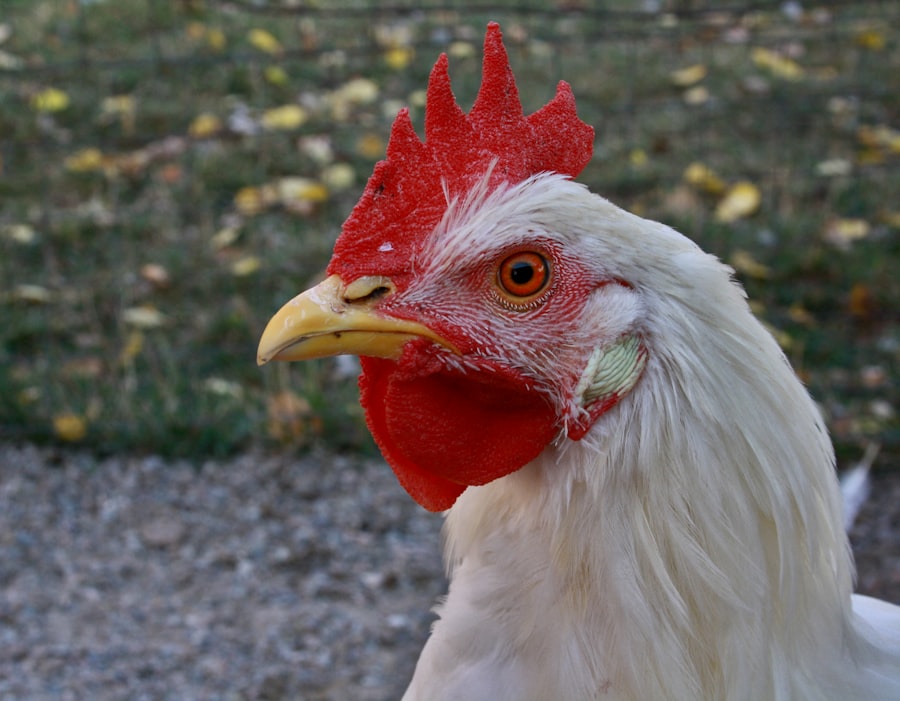
The Royal Purple Guinea Fowl has a wide range of uses and benefits that make it a valuable addition to any farm or homestead. One of the primary uses of this regal bird is pest control. The Royal Purple Guinea Fowl are voracious insect hunters that will eagerly consume ticks, flies, grasshoppers, and other pests that can be harmful to crops or gardens. This makes them an excellent natural alternative to chemical pesticides, as they can help keep pest populations in check without the need for harmful chemicals.
In addition to their pest control abilities, the Royal Purple Guinea Fowl are also valued for their delicious and lean meat. The meat of the Royal Purple Guinea Fowl is prized for its rich flavor and tender texture, making it a popular choice for gourmet chefs and home cooks alike. The eggs of the Royal Purple Guinea Fowl are also highly prized for their rich flavor and nutritional value, making them a popular choice for baking and cooking.
Conservation and Preservation Efforts for Royal Purple Guinea Fowl
The Royal Purple Guinea Fowl is an important breed that holds historical significance and cultural value. As such, there are ongoing efforts to conserve and preserve this regal bird for future generations to enjoy. Conservation efforts include breeding programs that aim to maintain genetic diversity within the breed, as well as educational initiatives that seek to raise awareness about the importance of preserving rare and heritage breeds like the Royal Purple Guinea Fowl.
In addition to breeding programs, there are also efforts to protect the natural habitats of the Royal Purple Guinea Fowl in their native range in West Africa. This includes initiatives to preserve forests and grasslands where these birds can thrive in their natural environment. By supporting these conservation efforts, individuals can help ensure that the Royal Purple Guinea Fowl continues to be a cherished part of our agricultural heritage for years to come.
If you’re interested in learning more about royal purple breeds of guinea fowl, you might also want to check out this informative article on keeping guinea fowl with chickens. It provides valuable insights into the compatibility of guinea fowl and chickens, which can be helpful if you’re considering raising both species together.
FAQs
What are royal purple breeds of guinea fowl?
Royal purple guinea fowl are a specific breed of guinea fowl known for their unique coloration and appearance. They have a deep, rich purple plumage with white spots and a distinctive crest on their heads.
What is the origin of royal purple guinea fowl?
Royal purple guinea fowl are believed to have originated in West Africa, particularly in the region of Guinea. They have been selectively bred for their unique coloration and are popular for ornamental and exhibition purposes.
What are the characteristics of royal purple guinea fowl?
Royal purple guinea fowl are known for their striking appearance, with deep purple plumage and white spots. They have a distinctive crest on their heads and are slightly larger than other guinea fowl breeds. They are also known for their loud and distinctive calls.
What is the temperament of royal purple guinea fowl?
Royal purple guinea fowl are generally known to be alert and active birds. They are good foragers and are often kept for pest control purposes, as they eat insects and small pests. They can be somewhat skittish and may be more suited for experienced bird keepers.
How are royal purple guinea fowl cared for?
Royal purple guinea fowl require a secure and spacious enclosure to roam and forage. They should be provided with a balanced diet of commercial poultry feed, supplemented with greens and insects. They also need access to fresh water at all times. Additionally, they require protection from predators and adequate shelter.
Are royal purple guinea fowl suitable for beginners?
Royal purple guinea fowl may not be the best choice for beginners, as they can be more skittish and require a bit more care and attention compared to other poultry breeds. However, with proper research and preparation, they can be a rewarding addition to a poultry flock.
Meet Walter, the feathered-friend fanatic of Florida! Nestled in the sunshine state, Walter struts through life with his feathered companions, clucking his way to happiness. With a coop that’s fancier than a five-star hotel, he’s the Don Juan of the chicken world. When he’s not teaching his hens to do the cha-cha, you’ll find him in a heated debate with his prized rooster, Sir Clucks-a-Lot. Walter’s poultry passion is no yolk; he’s the sunny-side-up guy you never knew you needed in your flock of friends!

